Related Research Articles
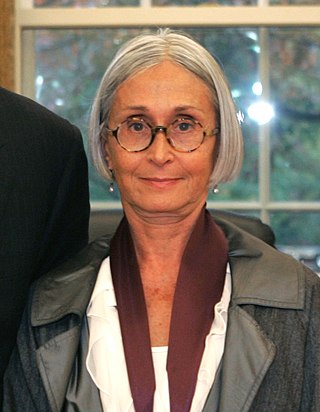
Twyla Tharp is an American dancer, choreographer, and author who lives and works in New York City. In 1965 she formed the company Twyla Tharp Dance, which merged with American Ballet Theatre in 1988. She regrouped the company in 1991. Her work often uses classical music, jazz, and contemporary pop music.
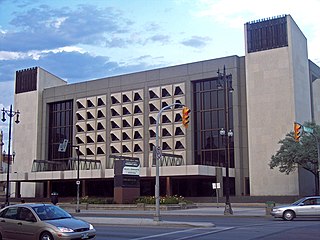
The Royal Winnipeg Ballet is Canada's oldest ballet company and the longest continuously operating ballet company in North America.
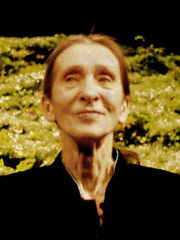
Philippine "Pina" Bausch was a German dancer and choreographer who was a significant contributor to a neo-expressionist dance tradition now known as Tanztheater. Bausch's approach was noted for a stylized blend of dance movement, prominent sound design, and involved stage sets, as well as for engaging the dancers under her to help in the development of a piece, and her work had an influence on modern dance from the 1970s forward. Her work, regarded as a continuation of the European and American expressionist movements, incorporated many expressly dramatic elements and often explored themes connected to trauma, particularly trauma arising out of relationships. She created the company Tanztheater Wuppertal Pina Bausch, which performs internationally.
Lynne Taylor-Corbett is a choreographer, director, lyricist, and composer. She was born in Denver, Colorado.
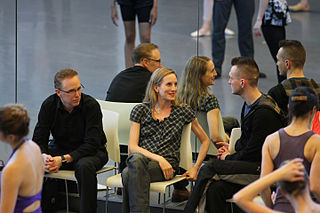
Wendy Whelan is an American ballet dancer. She was principal dancer with the New York City Ballet and performed with the company for 30 years, and toured in the U.S., Europe, and Asia. Whelan has also been an influential guest artist with Morphoses/The Wheeldon Company. In 2019, Whelan was named Associate Artistic Director of New York City Ballet.

Episodes is a ballet choreographed by Martha Graham and George Balanchine, to compositions by Anton Webern. The ballet was a co-production between the Martha Graham Dance Company and Balanchine's New York City Ballet (NYCB). Though it was conceived to be a collaboration between Graham and Balanchine, leading choreographers in modern dance and neoclassical ballet respectively, they ultimately worked separately on the ballet's two halves. Episodes I was choreographed by Graham, for dancers from her company and four NYCB members, and depicts Mary, Queen of Scots remembering the events in her life before her execution. Episodes II, by Balanchine, is completely plotless, and made for members of the NYCB and Graham dancer Paul Taylor, who originated a solo. The ballet uses all seven orchestral compositions by Webern.
Janie Taylor is an American ballet dancer, répétiteur and costume designer. She joined New York City Ballet in 1998, was promoted to principal dancer in 2005 and left in 2014. She then started designing costumes and staging works by Justin Peck and Benjamin Millepied, before performing again as a member of the L.A. Dance Project.

Misty Danielle Copeland is an American ballet dancer for American Ballet Theatre (ABT), one of the three leading classical ballet companies in the United States. On June 30, 2015, Copeland became the first African American woman to be promoted to a principal dancer in ABT's 75-year history.

Paul Belville Taylor Jr. was an American dancer and choreographer. He was one of the last living members of the third generation of America's modern dance artists. He founded the Paul Taylor Dance Company in 1954 in New York City.

Blanca Li, originally Blanca María Gutiérrez Ortiz is a Spanish choreographer, film director, dancer, and actress.
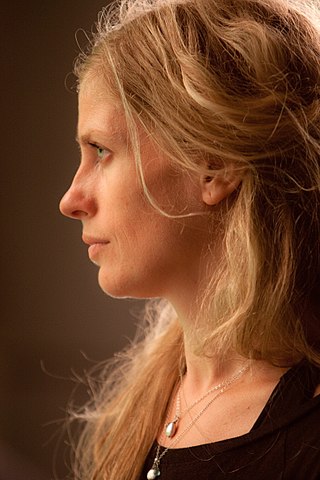
Crystal Pite is a Canadian choreographer and dancer. She began her professional dance career in 1988 at Ballet BC, and in 1996 she joined Ballett Frankfurt under the tutelage of William Forsythe. After leaving Ballett Frankfurt she became the resident choreographer of Montreal company Les Ballets Jazz de Montreal from 2001 to 2004. She then returned to Vancouver where she focused on choreographing while continuing to dance in her own pieces until 2010. In 2002 she formed her own company called Kidd Pivot, which produced her original works Uncollected Work (2003), Double Story (2004), Lost Action (2006), Dark Matters (2009), The You Show (2010), The Tempest Replica (2011), Betroffenheit (2015), and Revisor (2019) to date. Throughout her career she has been commissioned by many international dance companies to create new pieces, including The Second Person (2007) for Netherlands Dans Theater and Emergence (2009) for the National Ballet of Canada, the latter of which was awarded four Dora Mavor Moore Awards.

Gabrielle Lamb is a dancer, choreographer, and company director. In 2020, she was awarded a Guggenheim Fellowship.

Ann Marie DeAngelo is an American choreographer, director, producer, teacher, consultant and former dancer - an expert in all areas of dance. She was leading ballerina with the Joffrey Ballet, where early on she was pegged by Time magazine as "one of America's most outstanding ballerinas" and where she later served as associate director at the time of the company's move to Chicago in 1995.
Sorella Englund is a former soloist and character dancer with the Royal Danish Ballet. She has been a keen supporter of August Bournonville, staging a number of his ballets in Denmark and abroad.

The Kansas City Ballet (KCB) is a professional ballet company based in Kansas City, Missouri. The company was founded in 1957 by Russian expatriate Tatiana Dokoudovska. The KCB presents five major performances each season to include an annual production of The Nutcracker. The KCB, its school, and its staff are all housed in, operate from, and rehearse at the Todd Bolender Center for Dance and Creativity, a renovated, seven-studio, office, and rehearsal facility in Kansas City, Missouri, that opened in August 2011. The company performs at and is the resident ballet company at the nearby Kauffman Center for the Performing Arts, a performance venue in downtown Kansas City that opened in September 2011.
Donya Feuer was an American dancer, choreographer and a pioneer of modern dance. She was also a theater director and filmmaker, and a long-time collaborator with director Ingmar Bergman.

Patricia Delgado is an American ballet dancer, répétiteur and teacher. She joined the Miami City Ballet in 2000, was promoted to principal dancer in 2007 and left in 2017. Since then, she performs as a freelance dancer, stages works by Justin Peck and teaches ballet at The Juilliard School part-time. She served as an associate producer in the 2020 Broadway revival of West Side Story and as associate choreographer of the 2021 film adaptation of the musical.
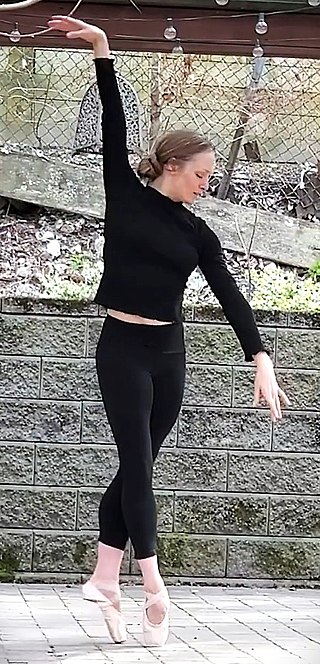
Ashley Ellis is an American ballet dancer. She joined the American Ballet Theatre in 2002. She danced at Corella Ballet from 2007 to 2010 and then Sarasota Ballet for a year. In 2011, she joined the Boston Ballet, and was promoted to principal dancer in 2013. Ellis retired from performing in 2021.
E. Virginia Williams was an American professional ballet choreographer, teacher, and founder of the New England Civic Ballet which became the Boston Ballet, the first professional ballet company in New England.
Janet Elizabeth Panetta was an American dancer, teacher, choreographer, and performer who made significant contributions to both classical ballet and contemporary dance forms.
References
- ↑ Karen Campbell (16 March 1998). "Dancing for 'Joy' - Everything comes together in choreographer Lila York's 'Ode' for Boston Ballet". Boston Herald . Archived from the original on 17 November 2018. Retrieved 5 January 2017.
- 1 2 3 4 5 6 7 8 9 10 11 12 13 Elizabeth Zimmer (1 July 1996). "Lila York: Barnstorming America for Dance". Dance Magazine . Retrieved 5 January 2017.
- 1 2 3 4 5 6 Debra Craine; Judith Mackrell (2010). The Oxford Dictionary of Dance . Oxford University Press. doi:10.1093/acref/9780199563449.001.0001. ISBN 978-0199563449.
- 1 2 Susan Ouellette (September 2013). "A Handmaid's Tale". Just Dance!. Vol. 2, no. I. Retrieved 3 January 2017.
- 1 2 3 Tobi Tobias (15 March 1999). "Lila York". New York magazine. Retrieved 3 January 2017.
- ↑ Joseph Mazo (October 1991). "Paul's Women: Motivator, Matriarch, Muse". Dance Magazine . ISSN 0011-6009.
- ↑ Holly Harris (23 September 2013). "An Audience with Lila York". The Dance Current. Retrieved 3 January 2017.
- ↑ Peter Morrell (30 September 2013). "Royal Winnipeg Ballet Premieres 'The Handmaid's Tale'". The Cultural Voyager. Retrieved 3 January 2017.
- ↑ Kourlas, Gia (28 February 2017). "In Lila York's Genes: The Paul Taylor Family". The New York Times. ISSN 0362-4331 . Retrieved 23 April 2024.
- 1 2 Scott Iwasaki (22 January 2006). "Dance captures everyday moves". Deseret News . Archived from the original on 5 January 2017. Retrieved 5 January 2017.
- ↑ Kevin Prokosh (24 April 2013). "Atwood's 'Powerful Story' Inspires RWB Season Opener". Winnipeg Free Press . Retrieved 5 January 2017.[ dead link ]
- ↑ Marc Shulgold (15 March 2007). "Past kicks in for choreographer 'Celts' creator found her own Irish heritage dancing in her head.(Spotlight)". Rocky Mountain News . Archived from the original on 16 November 2018. Retrieved 5 January 2017.
- ↑ Jackie McGlone (11 April 1999). "Looking to; the afterlife". Sunday Herald . Archived from the original on 19 November 2018. Retrieved 5 January 2017.
- ↑ Christine Temin (22 March 1996). "'Hot & Cool': A risk pays off". The Boston Globe .
- ↑ Britannica Book of the Year 2014 . Encyclopedia Britannica. 2014. ISBN 978-1625131713 . Retrieved 3 January 2017.
- ↑ Performing Arts: Year In Review 2013. Encyclopedia Britannica. 30 January 2014. Retrieved 3 January 2017.
- ↑ "Canada's Royal Winnipeg Ballet". National Arts Centre. 2015. Retrieved 5 January 2017.
- ↑ Holly Harris (18 October 2013). "Brave New Work". Winnipeg Free Press . Archived from the original on 17 November 2018. Retrieved 5 January 2017.
- ↑ Jen Zoratti (12 October 2013). "Timely Tale". Winnipeg Free Press .
- ↑ Natasha Gauthier (19 January 2015). "Q and A with Lila York: In the mind of The Handmaid". Ottawa Citizen . Retrieved 3 January 2017.
- ↑ "Lila York". Milwaukee Ballet. 2016. Retrieved 3 January 2017.
- 1 2 3 Jackie McGlone (8 April 1999). "York takes a rapturous step back to her roots". The Scotsman . Archived from the original on 20 November 2018. Retrieved 5 January 2017.